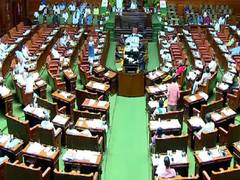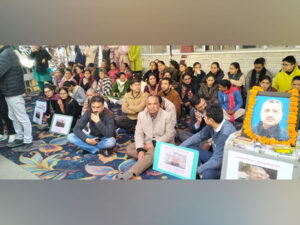Meghalaya focusing on adaptation, mitigation strategies as it revises state climate action plan
New Delhi, Jul 14 (PTI) With its ample green cover threatened by climate change, Meghalaya is focusing on its dedicated climate budget and an ambitious forest conservation scheme as it revises the state action plan to combat global warming, Chief Minister Conrad Sangma has said.
Meghalaya is among a few states in India to earmark as much as 16 per cent – Rs 4,501 crore – of the total state budget for sustainability and conservation initiatives in 2024-25; up from Rs 2,456 crore in 2022-23 and Rs 3,412 crore in 2023-24.
“We feel that climate change affects every aspect of life and governance. And hence it is important for not just my government but also for all governments to focus on climate change for a better future,” Sangma, who is here on a visit, told PTI.
That approach is helping shape the revision of the State Action Plan for Climate Change (SAPCC) with new climate adaptation targets and sectoral climate risk mitigation strategies.
According to the India State of Forest Report report of 2021, Meghalaya has 76 per cent of its land under total forest cover.
Harping on both “legacy and futuristic aspect to environmental conservation”, the chief minister said Meghalaya is home to a multitude of indigenous communities who have for generations shared an intimate bond with nature.
“This relationship is enshrined in the 10,000 hectares of traditionally protected forests across the state,” he said, adding, “Our focus is to involve local communities in protecting the forested areas around their habitation.”
About two years ago, Meghalaya introduced ‘Payment for Ecosystem Services’ programme called ‘Green Meghalaya,’ where the communities are paid an annual grant for conserving forested areas.
“This is India’s biggest such programme. In less than two years, Rs 44 crore has been released to 3,403 individuals and community beneficiaries to bring over 54,000 hectares of forests under conservation,” he said.
The state now envisions conservation of 1 lakh hectares of forest under the scheme in the next five years.
An additional 6,000 hectares of forest has been conserved in a participatory approach involving communities under the ‘Community Led Landscape Management Project,’ while yet another 22,500 hectares are being brought under afforestation under the MeghARISE project.
Speaking about linkage with the international carbon market, Sangma, the 46-year-old entrepreneur-turned-politician, said his state has made strides in connecting farmers to the international carbon market, which pays for carbon sequestration in new plantations.
“Through this initiative, we expect to conserve another 1 lakh hectares of agro-forestry areas,” he added.
But it is not just the forest that gets priority when the state’s action plan to combat climate change is being upgraded. Water is going to be a major focus area with the state facing a unique problem: on the one hand, there are areas with the highest rainfall in the country and, on the other, many areas suffer from lack of water.
Meghalaya gets 63 billion cubic metres of rainfall annually, but it flows away into Assam and Bangladesh.
“The geography of Meghalaya is characterized by an elevated and sloping, inhospitable terrain, the sparse population poses challenges of water retention. Hence, it is not the quantity of water or rain that we get but it is about the management,” Sangma said in an interview with PTI.
Meghalaya is currently mapping its different springs and forests using technology. For example, the government has identified 90 locations upstream of Shillong, where the catchment area for the city’s water supply is situated.
“With a minimum investment of creating check dams in different strategic locations can actually help us store a large quantity of water, which will, in turn, reduce water stress on Shillong,” he said.
“When the Jal Jeevan Mission started five years ago, we were in the bottom in the country, at 0.75 per cent. Today, we are almost at 80 per cent now,” he said and added that in the hilly terrain, “if the source is not managed, then there is no use. Therefore, we are working to ensure future water supply too under the Climate Adaptive Community Based Water Harvesting Project.”
The state is also looking at further getting hefty funding for externally aided projects for its climate adaptation measures. As of today, of the Rs 7,500 crore worth projects going under the externally funded projects, almost 50 per cent are related to climate change and natural resource management.
The Meghalaya State Organic Mission 2024-28 was launched on February 15, 2024 with the stated goal of converting and sustaining 1,00,000 hectares of land under organic cultivation.
Sangma was here to visit the 2nd Meghalaya Pineapple Festival underway at Dilli Haat here. The state government has tied up with Safal, a retail chain by Mother Dairy to sell Meghalaya’s organically grown pineapples at its outlets across Delhi.






